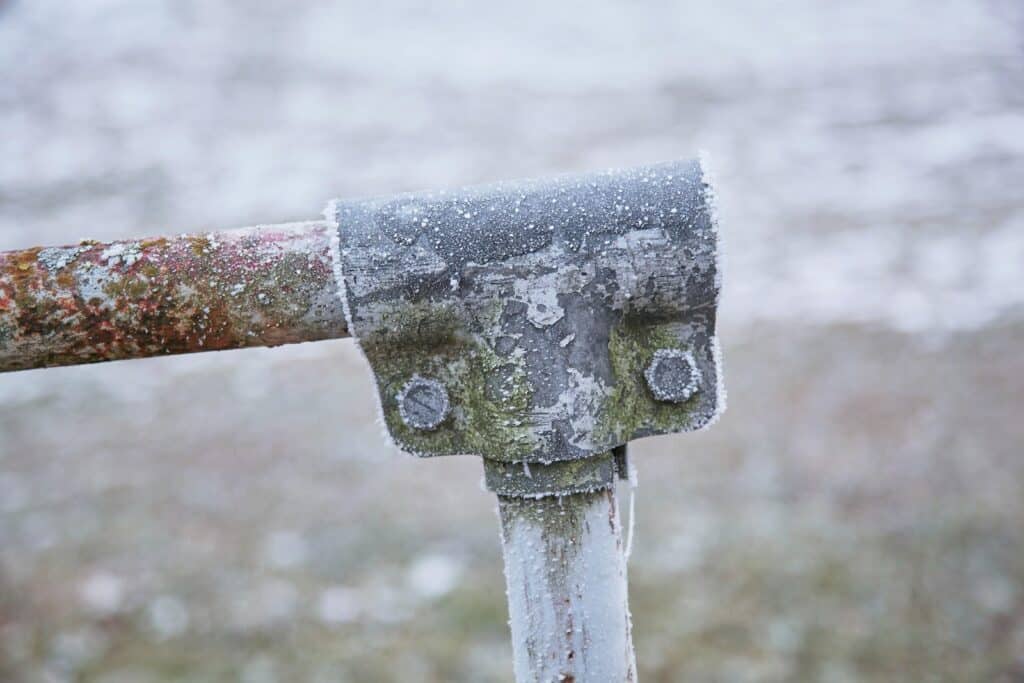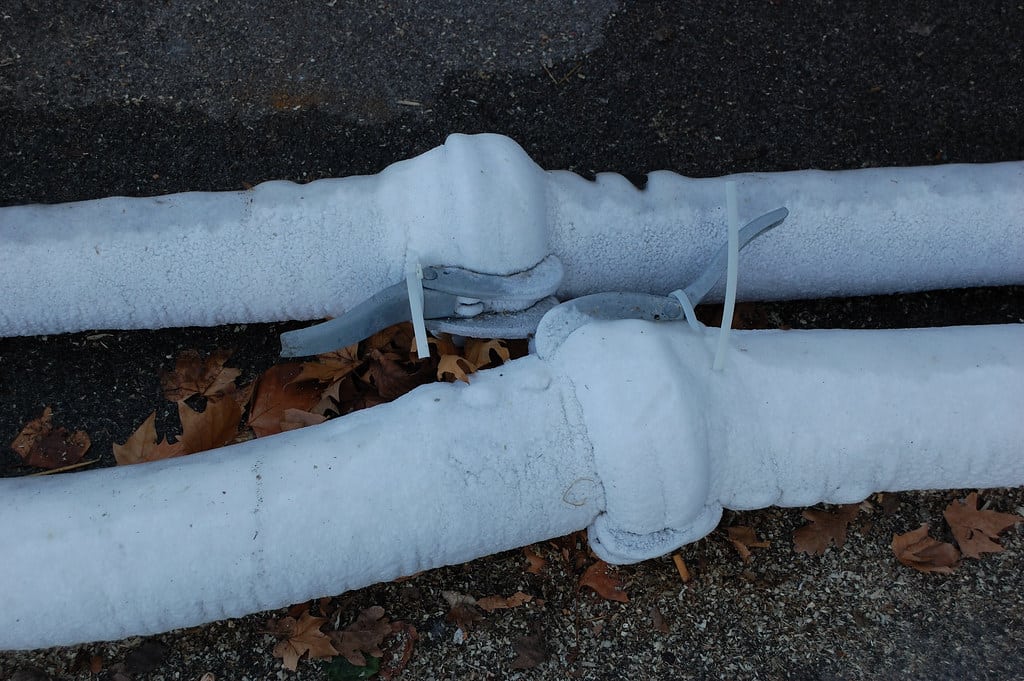Frozen pipes are one of the most common issues homeowners face during the winter months. Unfortunately, when water freezes inside pipes, it expands, potentially creating tremendous pressure that can lead to cracked or burst pipes. Beyond the inconvenience, this can result in costly damage to your plumbing system and property.
But don’t worry—with the right knowledge, you can not only prevent frozen pipes but also know what to do if your pipes freeze. Whether you’re navigating subzero temperatures or preparing your home for extremely cold weather, this guide has you covered.

Why Clean and Functional Pipes Are Essential
Maintaining clean and functional pipes is critical for the overall health, safety, and efficiency of your home. Here are the key reasons why well-maintained plumbing systems are so important:
1. Preventing Water Contamination
Properly functioning pipes ensure that the water flowing into your home is clean and safe for drinking, cooking, and bathing. Corroded or clogged pipes can lead to impurities entering your water supply, jeopardizing your family’s health.
2. Avoiding Costly Repairs
Regular maintenance and clean plumbing help prevent issues such as blockages, leaks, and corrosion. Neglecting minor problems can lead to major damage over time, potentially resulting in expensive emergency repairs or replacements.
3. Improving Water Pressure
Clean pipes free of buildup and obstructions maintain steady water pressure throughout your home. Low water pressure caused by clogs or damage can be inconvenient and frustrating, especially in the kitchen or bathroom.
4. Extending Lifespan of Appliances
Your plumbing directly impacts household appliances such as dishwashers, washing machines, and water heaters. Clean and functional pipes reduce strain on these systems, promoting their efficiency and longevity.
5. Preventing Mold and Mildew
Leaky or damaged pipes can lead to water accumulating in places it shouldn’t, creating the perfect environment for mold and mildew to grow. This not only affects your home’s structure but also poses serious health risks.
6. Supporting Energy Efficiency
Clear and functioning pipes ensure that water flows smoothly to where it’s needed. This improves the overall efficiency of your plumbing system, reducing energy waste and lowering utility bills.
By keeping your pipes clean and in good working condition, you safeguard both your home and your peace of mind, ensuring a convenient and healthy living environment for years to come.

Why Do Pipes Freeze in Cold Weather?
Before we jump into solutions, it’s important to understand why pipes freeze in the first place. When temperatures drop below the freeze point (32°F or 0°C), the water inside poorly insulated or exposed pipes located in unheated areas, like crawl spaces, exterior walls, or garages, can freeze.
When water freezes, it expands. This puts increased pressure on the pipe’s walls, potentially causing the pipe to burst. The danger isn’t just in the frozen section of the pipe but in the entire length of the pipe, as pressure builds between a frozen blockage and a closed faucet.
Pipes most at risk of freezing include:
- Those exposed to cold air, such as outdoor water pipes and swimming pool supply lines.
- Pipes in unheated areas like basements, attics, crawl spaces, and cabinets.
- Water supply pipes located in exterior walls or areas with poor insulation.
Now that we understand the “why,” let’s explore how to prevent frozen pipes.
How to Prevent Frozen Pipes
The best way to avoid damage is to prevent frozen pipes in the first place. By taking proactive measures, you can keep your plumbing system safe through the coldest months of the year.
1. Wrap Exposed Pipes with Pipe Insulation
One of the easiest ways to prevent pipes from freezing is to insulate exposed pipes, especially those in unheated areas. Use pipe insulation or foam tubes to create a barrier between the pipes and cold air. For added protection, consider wrapping pipes with heat tape or heating cable (but remember to follow the manufacturer’s instructions).
2. Seal Off Drafts
Inspect areas where cold air could enter, such as crawl spaces, basements, or around door and window frames. Use spray foam insulation or caulk to seal gaps. This will help maintain warmer air temperatures around your pipes.
3. Disconnect Garden Hoses
Leaving hoses attached during freezing weather can cause water to freeze in exterior faucets. Disconnect garden hoses and drain water from the outdoor spigot to prevent damage. Use faucet covers for additional protection.
4. Keep Warm Air Circulating
During prolonged temperatures below freezing, make sure warm air can circulate around water pipes. Open cabinet doors under sinks, especially those along exterior walls, to allow heat from your home to reach the pipes.
5. Maintain a Consistent Indoor Temperature
Keep your home’s thermostat set to at least 55°F, even when you’re not at home. Fluctuating indoor temperatures can increase the risk of pipes freezing overnight.
6. Allow Faucets to Drip
Running water doesn’t freeze as easily. Open a faucet slightly so that water trickles out during subzero temperatures. This relieves pressure in the pipes and reduces the chances of a burst pipe.
What to Do If Your Pipes Freeze
Sometimes, even your best frozen pipe prevention efforts aren’t enough, and your pipes freeze. When that happens, quick action is critical.
Here’s how you can safely thaw frozen pipes without causing additional damage:
1. Locate the Frozen Section
Turn on your faucets. If little to no water flows, there’s likely a frozen section in the water pipes between your faucet and the water meter.
Check areas in unheated spaces, like crawl spaces or around exterior walls, for visible frost or extremely cold spots on the pipes.
2. Turn Off the Water Supply
Shut off your home’s main water supply. This will minimize damage if the pipe has already cracked or burst.
3. Apply Heat to Frozen Pipes
Slowly warm the affected area to thaw frozen pipes. Here are some safe options:
- Use an electric heating pad or a hair dryer to apply heat to the frozen section.
- Place a space heater in the room near the pipes.
- Wrap pipes with towels soaked in hot water.
Avoid using open flames, such as blowtorches, as they can damage pipes or ignite flammable materials.
4. Keep the Faucet Open
Leave the faucet open while thawing the pipes. Running water, even if it’s just a trickle, will help melt ice faster and relieve pressure as the pipes thaw.
5. Inspect for Damage
Once water flow is restored, check for signs of leaks or cracks in the pipes. If you notice any damage, call a licensed plumber immediately to address the broken pipe.
Additional Tips for Frozen Pipe Prevention
- Install a Freeze Alert System: Freeze alert systems monitor your home’s temperature and alert you if it drops dangerously low.
- Drain Seasonal Water Lines: Before winter hits, drain swimming pool supply lines and exterior sprinkler systems.
- Upgrade Insulation: If your home has pipes located in exterior walls, consider adding extra insulation to those walls for long-term protection.
- Know Where Your Water Shut-Off Valve Is: Familiarize yourself with the location of your main water shut-off valve in case you need to act fast.
Products to Keep Your Pipes Clean and Healthy
Maintaining your pipes doesn’t have to be a daunting task. Here’s a list of just a few effective products that can help you keep your plumbing system clean and functioning optimally. Each product includes a direct link for easy purchase.
Bio-Clean Drain Cleaner
A powerful and eco-friendly enzyme-based cleaner that effectively breaks down organic waste in pipes. Perfect for preventing clogs.
Green Gobbler Drain Clog Dissolver
An industrial-strength solution designed to dissolve grease, hair, and other clogs with ease — safe for pipes and septic systems.
Drano Max Gel Clog Remover
A trusted and fast-acting gel formula that cuts through tough clogs and washes them away quickly.
Plumber’s Hero Drain Unclogging Kit
A pressurized air system that safely and easily clears blockages in sinks, tubs, and more without the use of harsh chemicals.
Roebic K-97 Main Line Cleaner
A biodegradable treatment tailored to clean and prevent buildup in main lines and septic systems alike.
Oatey Hercules Drain Stick
A simple yet effective tool for catching hair and debris in drains to prevent clogs before they happen.
Zip-It Drain Cleaning Tool
An affordable and reusable plastic tool designed to efficiently remove hair, food, and other debris from drains.
Using these products as part of your home maintenance routine will help you keep your pipes functional, reduce blockages, and prolong the lifespan of your plumbing systems.
Why Choose GAE Plumbing & Heating for Frozen Pipe Services?
When it comes to managing the challenges of frozen pipes, GAE Plumbing & Heating stands out as the trusted expert you can rely on. Our team of highly skilled professionals specializes in quickly identifying and resolving frozen pipe issues to minimize damage and restore water flow efficiently. With years of industry experience, we use advanced equipment and techniques to safely thaw pipes, ensuring no further harm comes to your plumbing system.
At GAE Plumbing & Heating, customer satisfaction is our top priority. We provide timely service, transparent pricing, and unmatched expertise to address your plumbing needs. Whether it’s an emergency situation or preventative maintenance, our team is ready to deliver reliable solutions you can count on. Protect your home from costly repairs by choosing GAE Plumbing & Heating for steadfast, professional service.
Act Now to Protect Your Plumbing System
Don’t wait for freezing weather to take control of your plumbing system. By investing in proper insulation, sealing drafts, and staying prepared to thaw frozen pipes, you can save your home from a frozen water nightmare.
Need professional help or more tips on protecting your pipes? Contact a licensed plumber before the temperatures drop. Taking these preventative steps now could save you time, money, and stress later.


